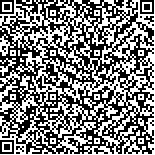| 本文已被:浏览 1239次 下载 911次 |

码上扫一扫! |
|
|
| 急性缺血性中风诊断分类的磁共振影像学特征 |
|
秦宝娟1, 时晶1, 倪敬年1, 魏明清1, 张学凯1, 张立苹2, 岳利峰1, 李婷1, 田金洲1
|
|
1.北京中医药大学东直门医院脑病三科, 北京 100700;2.北京中医药大学东直门医院放射科, 北京 100700
|
|
| 摘要: |
| [目的] 在新的中风临床诊断框架下,探索急性缺血性中风不同诊断分类的磁共振影像学(MRI)特征。[方法] 采用回顾性研究的方法,收集2017年1月-2018年10月于北京中医药大学东直门医院住院的274例急性缺血性中风患者的病例信息,根据《中风临床诊断框架的构建》分为真中风组(156例)与类中风组(118例),采用χ2检验及Mann-Whitney U检验对两组患者的弥散加权成像(DWI)分型、梗死血管供血区域、梗死灶直径、脑白质病变(WMLs)程度进行比较。[结果] 皮质-皮质下、大的穿通支梗死与真中风相关(P<0.05,P<0.01),小的穿通支梗死与类中风相关(P<0.01)。前循环梗死、重度WMLs与真中风相关(P<0.01;P<0.05),后循环梗死、轻度WMLs与类中风相关(P<0.05,P<0.05)。真中风组单部位病灶平均最大直径、多部位病灶平均最大直径及最小直径均大于类中风组(P<0.05)。[结论] 真中风、类中风磁共振影像学特征不同,前循环梗死、大的穿通支或大面积梗死、重度WMLs者多表现为真中风;后循环梗死、小的穿通支或腔隙性梗死、轻度WMLs者多表现为类中风。 |
| 关键词: 缺血性中风 急性期 真中风 类中风 磁共振 弥散加权成像 |
| DOI:10.11656/j.issn.1672-1519.2020.10.13 |
| 分类号:R255.2 |
| 基金项目:高等学校学科创新引智基地项目(B08006);教育部长江学者和创新团队发展计划项目(IRT0810);国家中医药管理局国家中医临床研究基地业务建设科研专项项目(JDZX2015297);北京中医药大学科研创新团队项目(2019-JYB-TD-007)。 |
|
| Magnetic resonance imaging features of diagnostic classification in acute phase of ischemic stroke |
|
QIN Baojuan1, SHI Jing1, NI Jingnian1, WEI Mingqing1, ZHANG Xuekai1, ZHANG Liping2, YUE Lifeng1, LI Ting1, TIAN Jinzhou1
|
|
1.The Third Department of Encephalopathy, Dongzhimen Hospital Affiliated to Beijing University of Chinese Medicine, Beijing 100700, China;2.Department of Radiology, Dongzhimen Hospital Affiliated to Beijing University of Chinese Medicine, Beijing 100700, China
|
| Abstract: |
| [Objective] To explore the magnetic resonance imaging (MRI) features of different diagnostic classification in patients with acute ischemic stroke under the new clinical diagnostic framework for stroke.[Methods] A retrospective observational study was conducted,case information of 274 hospitalized patients with acute ischemic stroke admitted to our hospital from January 2017 to October 2018 was collected. Patients were divided into typical stroke group (156 cases) and atypical stroke group (118 cases) according to construction of clinical diagnostic framework of stroke. Chi-square test and Mann-Whitney U test were used to compare diffusion-weighted imaging (DWI) classification,area of infarction responsible blood vessels,infarction diameter and the degree of white matter lesions (WMLs) between the two groups.[Results] The cortical and subcortical infarction,the big penetrating branch infarction were related with typical stroke (P<0.05;P<0.01),the small penetrating branch infarction was related with atypical stroke (P<0.01). Anterior circulation and severe WMLs were related with typical stroke (P<0.01;P<0.05). Posterior circulation and mild WMLs were related with atypical stroke (P<0.01;P<0.05). The average maximum diameter of single lesions,the average maximum diameter and minimum diameter of multiple lesions in typical stroke group were higher than those in atypical stroke group (P<0.05).[Conclusion] There are different characteristics of MRI between typical stroke and atypical stroke. Anterior circulation infarction,the big penetrating branch infarction,massive cerebral infarction and severe WMLs mostly manifest as typical stroke. Posterior circulation infarction,the small perforating branch,lacunar infarction and mild WMLs mostly manifest as atypical stroke. |
| Key words: ischemic stroke acute phase typical stroke atypical stroke MRI DWI |
